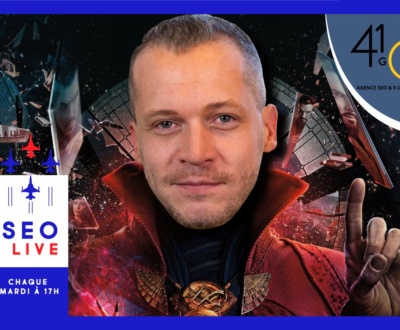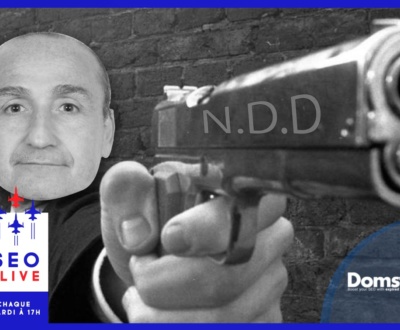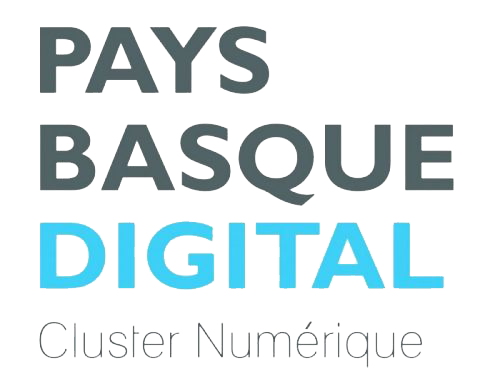On parle d’enfermer lorsque le pronom, réfléchi ou complément direct et/ou indirect se place après le verbe en y étant soudé. … En espagnol, l’inclination des deux pronoms complémentaires directs et indirects est à l’impératif, à l’infinitif et au gérondif. …
Qui a dit l’atome n’existe pas ?

Aristote s’est appuyé sur le concept de Thales des quatre éléments de base et a affirmé que les atomes ne pouvaient pas exister car ils sont invisibles à ses yeux. La conception aristotélicienne du matériel reçu l’appuie des moines de l’époque et traversa les siècles qui suivirent jusqu’au XVIIIe siècle.
Qui a rejeté la théorie atomique ? L’atomisme de Leucippe et Démocrite révisé et corrigé Bien que l’atomisme ait eu ses adeptes dans la Grèce antique, il a ensuite été rejeté par des philosophes influents, tels que Platon et Aristote, et n’a retrouvé sa popularité que pendant la révolution scientifique. des siècles.
Qui a découvert l’existence de l’atome ?
La découverte de l’atome. 450 av. J.-C. : L’idée atomique est née il y a près de 2 500 ans sur les rives de la mer Égée. Le philosophe grec Leucippe et son élève Démocrite ont été les premiers à suggérer que toute matière était composée de minuscules particules invisibles à l’œil nu.
Qui a découvert l’atome et quand ?
En 1808, John Dalton reprend l’idée des atomes pour expliquer les lois chimiques. Dans sa théorie atomique, il émet l’hypothèse que les particules d’un corps simple sont similaires, mais sont différentes lorsqu’elles passent d’un corps à l’autre.
Quel personnage a initié la notion d’atome ?
Au début des années 1800, John Dalton a développé sa théorie atomique dans laquelle il a proposé que chaque élément est composé d’atomes d’un type unique et unique et que ces atomes sont immuables et indestructibles, mais peuvent être combinés dans des structures plus complexes.
Qui a eu l’idée de l’atome ?
Mais c’est un autre philosophe grec, DÉMOCRITE, qui assume au IVe siècle av. J.-C. l’idée de particules invisibles et indivisibles, le mot « atomes » qui en grec signifie « indivisible ».
Qui est le père de l’atome ?
Niels Bohr (1885-1962).
Quel personnage a initié la notion d’atome ?
Au début des années 1800, John Dalton a développé sa théorie atomique dans laquelle il a proposé que chaque élément est composé d’atomes d’un type unique et unique et que ces atomes sont immuables et indestructibles, mais peuvent être combinés dans des structures plus complexes.
Qui a dit l’atome n’existe pas la matière est constituée de quatre éléments le feu l’air la terre et l’eau ?
Aristote prétend que la matière est divisible à l’infini, contrairement à ce que disait Démocrite, qui pense qu’il existe des particules indivisibles, les atomes. Aristote pense également que la matière est constituée de quatre éléments : la terre, le feu, l’air et l’eau.
Qui affirme que la matière est constituée de 4 éléments ?
La théorie des quatre éléments en tant qu’unités constitutives de la matière a été proposée il y a 2500 ans par le grec Empédocle. Toute matière est alors composée de plus ou moins de ces quatre éléments : les propriétés différentes de deux substances s’expliquent par la différence du mélange.
Qui a dit l’atome n’existe pas la matière est constituée de quatre éléments ?
L’idée « d’atome », née dans l’Antiquité des réflexions du philosophe grec Démocrite d’Abdère, est tombée dans l’oubli pendant plusieurs siècles, éclipsée par la théorie des quatre éléments d’Aristote.
Comment calculer n avec M et M ?

Il suffit d’appliquer la relation n=m/M pour déterminer le nombre de moles. Exemple : Calculez le nombre de moles dans 10 g de NaCl.
Comment calculer le nombre de molécules N ? Ainsi, une mole d’atomes, de molécules ou d’ions contient 6,02 × 1023 atomes, molécules ou ions. Ce nombre est la constante d’Avogadro, notée : NA = 6,02 × 1023 mol-1. Exemples : Il y a 6,02 × 1023 atomes d’oxygène dans une mole d’atomes d’oxygène.
Comment trouver N avec la masse molaire ?
Le nombre de moles est : n = n = CmM x Vsol. Inutile de mémoriser cette formule, on pourrait la retrouver avec le raisonnement précédent. n est le nombre de moles en moles, Cm est la concentration massique en g. Lâ1, M est la masse molaire en g.
Comment calculer n avec n et na ?
Ce numéro s’appelle le numéro d’Avogadro. Constante d’Avogadro = 6,02.1023 (correspond au nombre d’atomes de carbone 12 dans 12,0 g de carbone 12). On note Na = nombre d’entités élémentaires dans 1 mol….n = N/Na avec :
- n en moles ;
- N sans unité ;
- Na en mol-1.
Comment calculer N avec la masse molaire ?
La formule utilisée ici est m n M = si l’on veut calculer une quantité de matière. Si on veut calculer la masse, il suffit d’exprimer m : m = n × M. Si on trouve la masse molaire, alors m M vaut n = .
Comment calculer le nombre d’entités n ?
La quantité de matière, en moles (symbole : moles), d’un élément dans un échantillon d’éléments est . On en déduit donc que le nombre d’entités d’un échantillon dont la quantité de matière dans l’entité (en moles) est . 3 moles d’eau contiennent : = 3 × 6,02 × 1023 = 1 806 × 1024 molécules d’eau H2O.
Comment calculer des entités ?
Détermination de la masse d’une entité La masse des molécules se calcule en additionnant les masses des atomes qui les composent. Exemple : la masse d’une molécule d’eau H2O est égale à la masse de deux atomes d’hydrogène H plus celle d’un atome d’oxygène O.
Comment calculer le n ?
Par conséquent, pour calculer la quantité de matière nécessaire, il faut utiliser la formule n = C × V, où n représente la quantité de matière des ions argent. On note donc n(Ag ) cette quantité.
Comment calculer le n ?
Par conséquent, pour calculer la quantité de matière nécessaire, il faut utiliser la formule n = C × V, où n représente la quantité de matière des ions argent. On note donc n(Ag ) cette quantité.
Comment calculer n avec n et na ?
Ce numéro s’appelle le numéro d’Avogadro. Constante d’Avogadro = 6,02.1023 (correspond au nombre d’atomes de carbone 12 dans 12,0 g de carbone 12). On note Na = nombre d’entités élémentaires dans 1 mol….n = N/Na avec :
- n en moles ;
- N sans unité ;
- Na en mol-1.
Quelle est la relation entre N et Na ?
Na est le nombre d’Avogadro, c’est 61023, c’est la quantité d’objet qui fait 1 mole (comme 12 c’est la quantité d’objet qui fait une douzaine…) n=N/Na est donc le nombre de moles d’espèces chimiques.
Quelle est l’origine du symbole n ?
N, azote : N vient du latin « nitrogenium », lui-même issu d’un mot grec signifiant « qui engendre le salpêtre ». Notez que l’azote est toujours le nom anglais de l’azote (et que « l’azote » plutôt que « l’azote liquide » est un anglicisme qui devrait être interdit).
Quel est le symbole ne en chimie ?
Quelle est la signification du numéro atomique ?
Le numéro atomique d’un atome est toujours égal au nombre de protons. Dans un atome neutre, il y a autant de protons que d’électrons. Ainsi, le numéro atomique indique également pour ces atomes le nombre d’électrons que ces atomes ont.
Quel est la signification du numéro atomique Z ?
Le numéro atomique, représenté par la lettre Z, est le numéro attribué à chaque élément chimique, c’est-à-dire à tout autre type d’atome.
Comment lire un numéro atomique ?
Les éléments sont répertoriés, par ordre croissant de numéro atomique, de droite à gauche et de haut en bas. Le numéro atomique, au-dessus du symbole, est en fait le nombre de protons dans un atome de l’élément considéré.
Quel est le nom de l’élément de symbole N ?
| Nom de l’élément chimique | Symbole | numéro atomique |
|---|---|---|
| argon | Ar | 18 |
| Arsenic | as | 33 |
| astate | Abeille | 85 |
| Azote | NE PAS | sept |
Quelle est l’origine des symboles n et au ?
Par exemple, l’atome d’or, le symbole « Au » vient du latin « aurum ». Le symbole de l’atome de sodium, « Na », vient de « natron », un sel riche en sodium. L’atome de mercure porte le symbole « Hg ». Il vient du latin hydrargyrum, qui signifie « argent liquide ».
Pourquoi l’or au ?
J.-C. L’or est l’élément chimique de numéro atomique 79, symbole Au. Ce symbole, choisi par Berzelius, est formé des deux premières lettres du mot latin aurum (même sens).
Quelle est l’origine du symbole au ?
Au, or : Au encore vient du latin : « aurum » pour or et signifie « briller ». Certains mots comme « aurifère », « aurore » ou « austral » portent encore cette racine.
Quels sont les noms des atomes ?

liste de tous les articles :
- 1 hydrogène H.
- 2 Hélium He.
- 3 LithiumLi.
- 4 Béryllium Be.
- 5 Bore B.
- 6 Carbone C.
- 7 Azote N.
- 8 Oxygène O.
Quel est le nom de l’atome i ?
Quelles sont les atomes ?
Un atome est constitué d’un noyau de protons et de neutrons et d’un nuage d’électrons. Il est caractérisé par un numéro atomique qui correspond au nombre de protons, qui est aussi celui de ses électrons.
Quels sont les trois atomes ?
Une molécule triatomique est une molécule composée de trois atomes. H2O, CO2 et HCN en sont des exemples.
Qu’est-ce qui est composé d’atomes ?
Un atome est une entité électriquement neutre composée de deux types d’éléments : un noyau atomique, qui lui-même est constitué de protons et de neutrons et concentre la quasi-totalité de la masse de l’atome ; électrons se déplaçant autour du noyau.
Quels sont les 4 atomes ?
L’atome d’hydrogène a le symbole H et est modélisé par une sphère blanche. L’atome d’oxygène a le symbole O et est modélisé par une sphère rouge. L’atome de carbone a le symbole C et est modélisé par une sphère noire. L’atome d’azote a le symbole N et est modélisé par une sphère bleue.
Quels sont les trois atomes ?
Une molécule triatomique est une molécule composée de trois atomes. H2O, CO2 et HCN en sont des exemples.
Quels sont tous les atomes ?
Vous connaissez actuellement 4 types d’atomes : le carbone, l’oxygène, l’hydrogène et l’azote, mais il en existe bien d’autres. Au total il y en a plus d’une centaine ! Cette grande famille, composée de plus de 100 cousins, est regroupée dans le tableau périodique ci-dessous.
Quel est le nom du symbole P ?

P est le symbole chimique de l’élément chimique phosphore (voir liste des éléments chimiques).
Qu’est-ce que P en Physique et Chimie ? P est le symbole chimique de l’élément chimique phosphore (voir liste des éléments chimiques). p est un type d’orbitale atomique (abréviation de principal). Les éléments du bloc p, bloc du tableau périodique sont ceux dont la plus haute orbitale occupée est de type p. p (minuscule) est le symbole du proton.
Quelle est la signification de p ?
p (minuscule) est le symbole du proton. p (minuscule ou majuscule) désigne classiquement la pression. P (lettre majuscule) désigne une puissance.
Quels sont les symboles de l’atome ?
Chaque atome a une représentation spécifique qui s’écrit Z A X ^A_ZX ZAâX où : X X X est le symbole de l’élément chimique représenté par une lettre majuscule ou une lettre majuscule ; ex. : O O O pour l’oxygène, C C C pour le carbone, A u Au Au pour l’or, Cl Cl Cl pour le chlore, etc.
Quel est le symbole de l’atome ça ?
Le calcium est l’élément chimique de numéro atomique 20, symbole Ca.
Quel est le symbole chimique ?
Le symbole chimique d’un élément est l’abréviation du nom d’un élément chimique du tableau périodique des éléments utilisé pour identifier les éléments et les composés chimiques. Il se compose de l’initiale du nom latinisé, à laquelle une lettre supplémentaire peut être ajoutée.
SEOCAmp Paris 2020
Étude de cas du cycle Black Hat
Comment autofinancer sa startup avec un netlinking agressif ? ou l’histoire du lancement d'une plateforme qui sans branding, sans réseaux sociaux, sans partenaires (marketing) et sans mentions légales... a générer 100 000€ avec seulement quelques pages web, un bon marketing et un bon SEO !

Retour sur Investissement
Saviez vous que le référencement google est le pilier central de votre communication ? Sans aucun doute le bras de levier le plus rentable autour duquel doivent s'articuler vos actions publicitaires payantes.
Devis gratuit
Nous offrons des services de référencement professionnel qui aident les sites Web à augmenter considérablement leur score de recherche afin de concourir avec les classements les plus élevés, même en ce qui concerne les mots-clés hautement compétitifs.
Articles récents
- Référencement de Centres de Formation : étude de cas 22 novembre 2022
- Le Cocon Sémantique : Onsite, Onpage, Offsite… tous les Secrets 9 novembre 2022
- Secrets de Ligne Éditoriale SEO avec Christian Méline 9 novembre 2022














